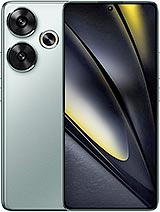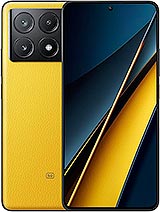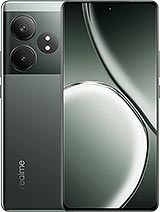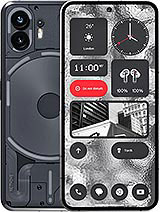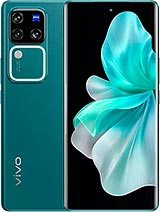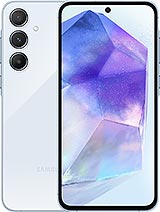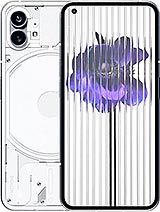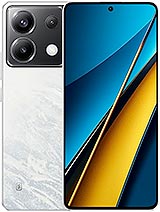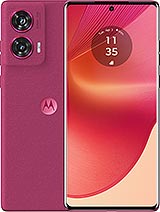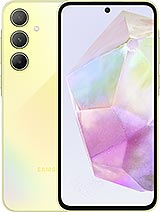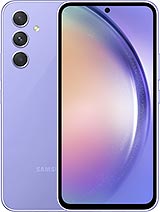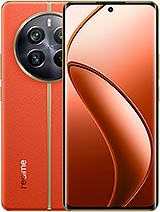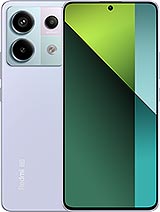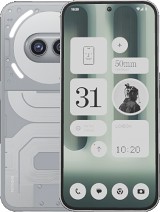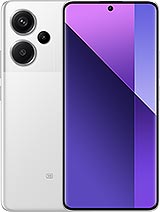Nothing Phone (2a) Plus review

Nothing OS 2.6 on top of Android 14
The Nothing Phone (2a) runs on Android 14 with the latest version of Nothing's custom OS skin on top. That would be Nothing OS 2.6 at the time of writing.
The Nothing Phone (2a) Plus gets the same level of software support as the Nothing Phone (2a) and the regular Nothing Phone (2). That is to say - three years of software updates and four years of security patches.

Nothing OS continues to be very "clean" in terms of feature customization and thus near to AOSP. However, at the same time, it is heavily visually customized with a very distinct look and feel. Nothing's signature dot matrix font and overall aesthetic surrounding it permeate the UI. You get a whole slew of custom widgets (24 in total) from everything from clocks and calendars to contacts and weather, so you can retain that consistent Nothing look.

The notification shade and quick toggles are also as much AOSP as they are Nothing. With Nothing OS 2.5, the top two big quick toggle areas were changed from circles to squares with rounded corners.

Another relatively new addition to Nothing OS is the custom icon pack that, expectedly, is monochrome and has a consistent look.
There is an Always-on Display available, and it, expectedly, sticks to the general aesthetic as well. There are a slew of lockscreen widgets to choose from as well.

Nothing OS has a Monochrome UI option for those wanting an even more exclusive, unique experience. It is part of the Do Not Disturb and Bedtime routines, but you can set it up for you however you prefer. The monochrome UI is a display option, and it doesn't affect the UI exactly, so if you take a screenshot or a picture, it will still be colorful.
In a bid to innovate and be a part of the "trendy crowd," Nothing is constantly trying its hand at some advanced and experimental features. Our review unit is missing the "Connect to Tesla" menu that the Nothing Phone (2) had, so perhaps that didn't pan out. However, the experimental AirPods support is still present. So is the "Glyph Progres" feature that integrates with third-party apps and allows you to track your Uber's progress from the back of your phone.
There are some less experimental hardware OS-level integrations available as well, like through the Nothing X app, which supports a number of headphones like the Ear (1), Ear (stick), Ear (2) and CMF Buds, Neckband Pro and Buds Pro.

The most custom aspect of the Nothing OS is the inclusion of the Glyph Interface, which controls the LEDs on the back of the phone. First, the feature is optional, so you can just turn it off or schedule it if it bothers you at night. You can also adjust the brightness of the LEDs, which can get seriously bright, even at the default medium brightness.
At present, the Glyph Interface can be used primarily for notifications and alerts. The Glyph Menu contains Brightness, Ringtones, Notifications, Flip to Glyph, Glyph Timer, Composer shortcut for custom Glyph ringtones, and Visual Feedback for Volume control, Charging meter, Google Assistance, Music Visualizer and third-party apps (Uber, Zomato and Google Calendar for now).
You can check out a more in-depth explanation of all of the neat Glyph options in our Nothing Phone (2) review. These haven't really changed that much.
As far as bloatware is concerned, the Phone (2a) Plus has none of it to speak of, assuming you don't count the ever-increasing mandatory Google apps as bloatware. The only custom apps on the phone are the Camera, Weather, and Recorder apps. These expectedly share a cohesive design. The Nothing X app was pre-installed on our unit as well, but if yours is missing, it is available on the Google Play store.
Benchmarks and performance
One of the key upgrades the Nothing Phone (2a) Plus brings to the table is a new chipset. The Dimensity 7350 Pro 5G was co-developed with MediaTek and exclusive to Nothing. Despite its naming, the chip is actually a lot closer to the Dimensity 7200 than the 7300. In fact, it is basically a souped-up version of the Dimensity 7200.

The Dimensity 7350 Pro is a 64-bit ARMv9-A chip made on TSMC's modern 4nm node. The CPU configuration consists of two ARM Cortex-A715 cores, clocked at up to 3.0 GHz, plus another six Cortex-A510 cores, working at up to 2.0 GHz. Like the Dimensity 7200, the 7350 Pro has a Mali-G610 GPU onboard, but it's an overclocked one working at up to 1.3 GHz. Nothing claims that the Dimensity 7350 Pro inside the Nothing Phone (2a) Plus is nearly 10% faster in CPU tasks than the Nothing Phone (2a) and up to 30% faster in GPU tasks.
The Nothing Phone (2a) Plus comes with 256GB of non-expandable onboard UFS 2.2 (as per our testing) storage and either 8GB or 12GB of LPDDR4X RAM. Nothing offers up to 8GB of RAM boost or virtual RAM.
Let's get to some actual benchmarks, starting with GeekBench and CPU tests. The Dimensity 7350 Pro holds its ground really well. As advertised, it is a bit more powerful than the Dimensity 7200 Pro inside the Nothing Phone (2a).
The single-core performance of the Dimensity 7350 Pro is basically on the same level as the Dimensity 8200. The multi-core performance isn't as impressive, but you still get a bit better performance than the Dimensity 7200 Pro inside the Nothing Phone (2a).
AnTuTu is a much more compound benchmark with GPU and memory tests, to name a few. The Nothing Phone (2a) Plus does very well in this benchmark, with middle-of-the-road performance within its price range. The Nothing Phone (2a) Plus is quite comparable to the Redmi Note 13 Pro+ and its Dimensity 7200 Ultra chipset. The Nothing Phone (2a) Plus is also comparable in AnTuTu performance to the original Nothing Phone (1) with its Snapdragon 778G+, but the Nothing Phone (2) still scores much, much better.
It is perhaps worth noting that Nothing claims the Phone (2a) Plus can surpass 805,000 points on AunTuTu, but we couldn't get quite that high of a score.
The Nothing Phone (2a) Plus also has great GPU performance. The Dimensity 7350 Pro actually has the same four-core Mali-G610 MC4 GPU inside the Dimensity 7200 Pro in the Nothing Phone (2a). However, the one inside the Nothing Phone (2a) Plus is overclocked to 1.3 GHz and this shows in the 3D Mark scores. That being said, you can get much better graphical performance from other phones in the price segment.
We've discontinued GFXBench graphics benchmarking as the app is often banned/blacklisted on the phones we receive for review. The graphics performance ranking in 3D Mark is just as meaningful, so we suggest you refer to that one instead.
On a practical level, the Nothing Phone (2a) Plus offers great performance. It chewed through basically every task we threw at it, including gaming, even with more demanding titles. That being said, we aren't sure that the performance uplift compared to the Nothing Phone (2a) is enough to justify one over the other.
Thermal-throttling
The Nothing Phone (2a) Plus has excellent thermal management. The MediaTek 7350 Pro doesn't seem to kick out too much heat, which is interesting, given that it is overclocked. The phone handles heat over time very well, with little throttling and performance loss.
It actually left us quite impressed in this department. The surface of the Nothing Phone (2a) Plus doesn't really get hot either.
Reader comments
- BRENDA K
- 10 Mar 2025
- fnI
how is the picture quality for thus phone
- otakufrank
- 10 Feb 2025
- pwv
Because Xiaomi sucks. Hyperos is bad and you get a system full with ads.
